
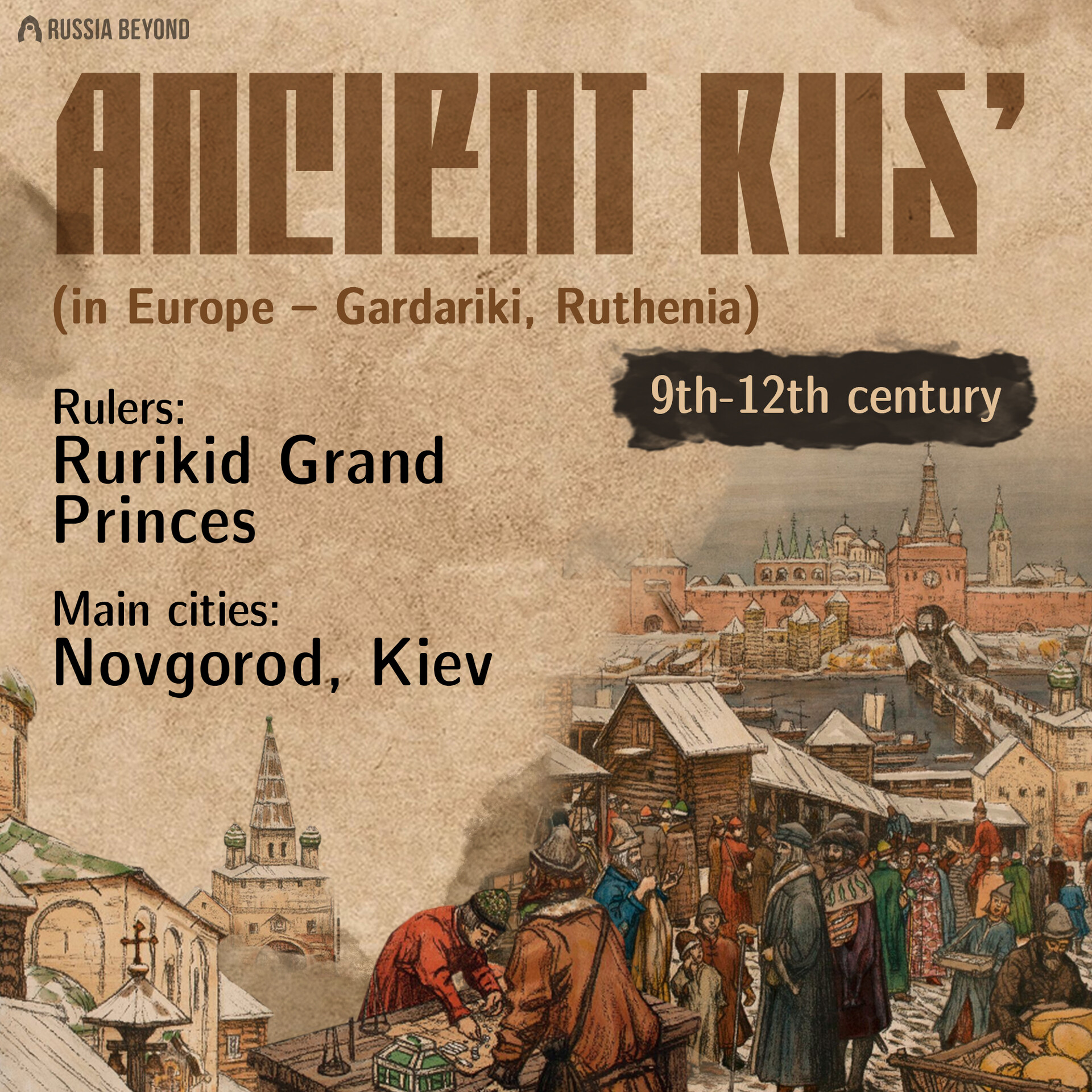
In a treaty between Kievan Prince Oleg and Byzantium, signed in the year 911, Russia was called Rus’.
The term ‘Appanage Russia’ entails the period of feudal fragmentation of the state, when it split into independent principalities. By the middle of the 12th century, there were 13 of them (according to other estimations, from 15 to 18).
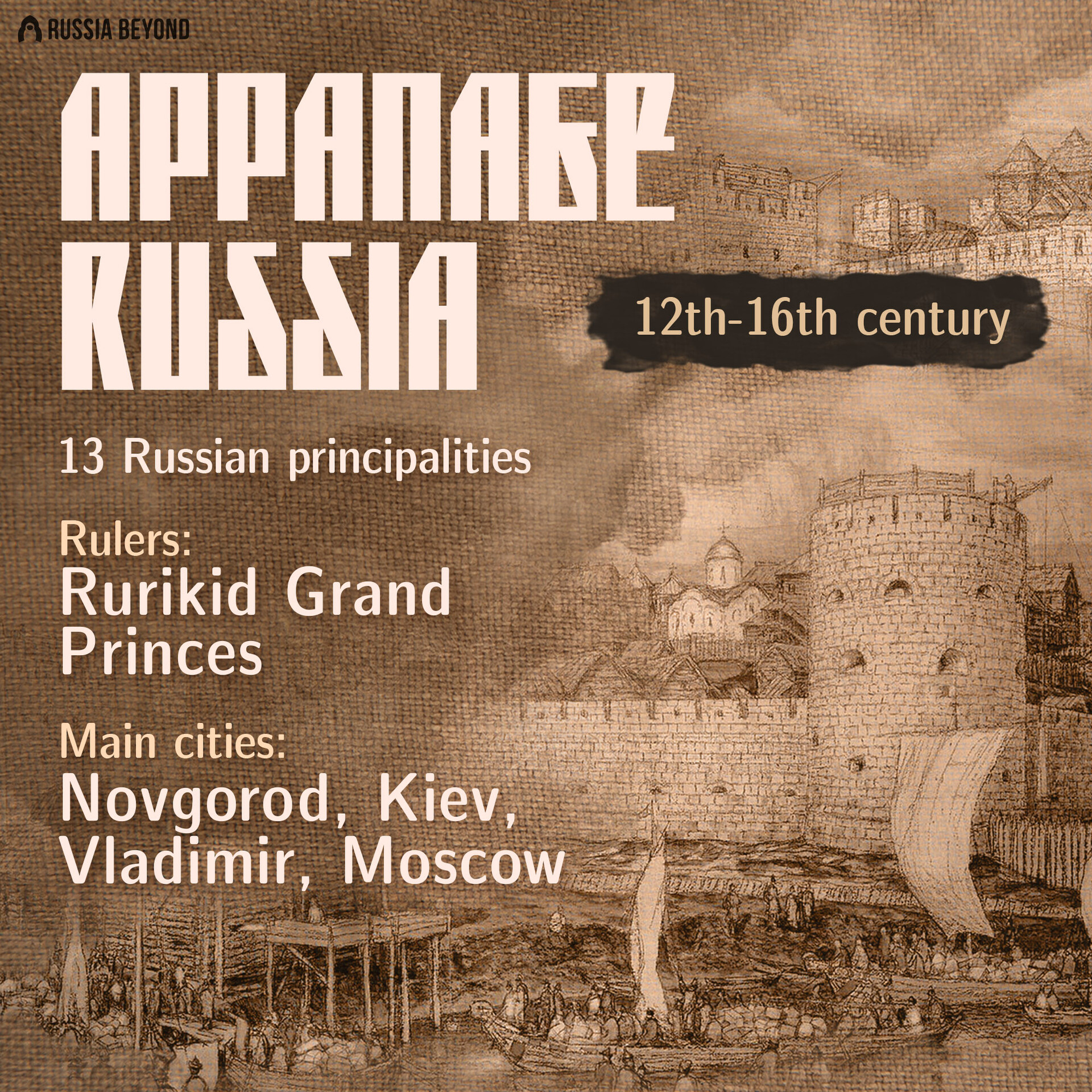
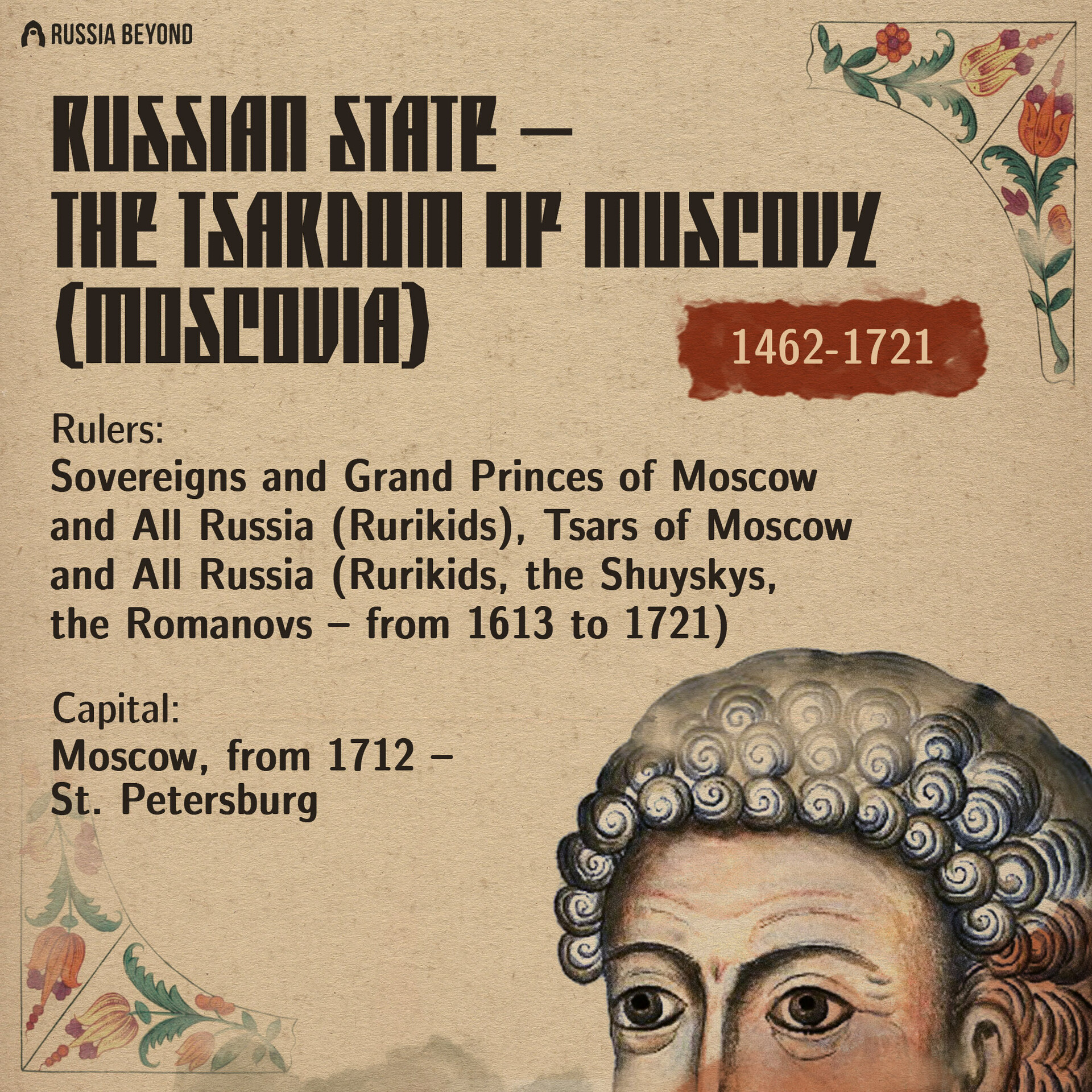
Grand Prince of Moscow Ivan III began gathering the Russian lands into a united Russian State. Centralization helped put an end to the rule of the Mongol-Tatar yoke on the territory of Rus’. By 1547, Ivan III’s grandson, Ivan IV the Terrible, was the first to be anointed to reign and became the first Tsar of All Russia.

The transformation of the country into an empire happened under Peter the Great. In 1721, he assumed the title of Emperor of All Russia for his victory in the Great Northern War and the establishment of dominance in the Baltic Sea.
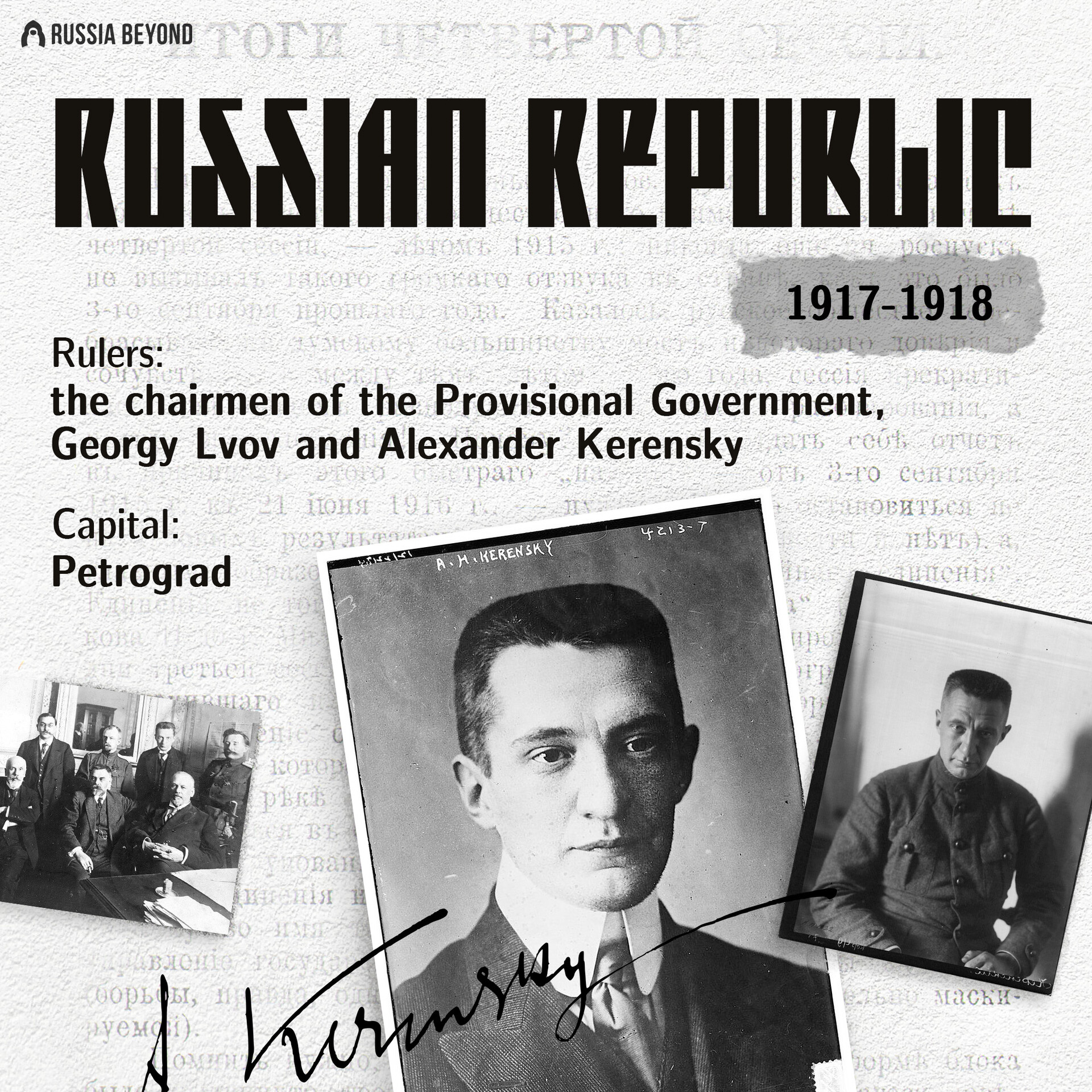
After the 1917 February Revolution and the overthrow of the monarchy, power was seized for a short while by a Provisional Government, which proclaimed Russia a republic. In October 1917, it was overthrown by the Bolsheviks and the SRs.
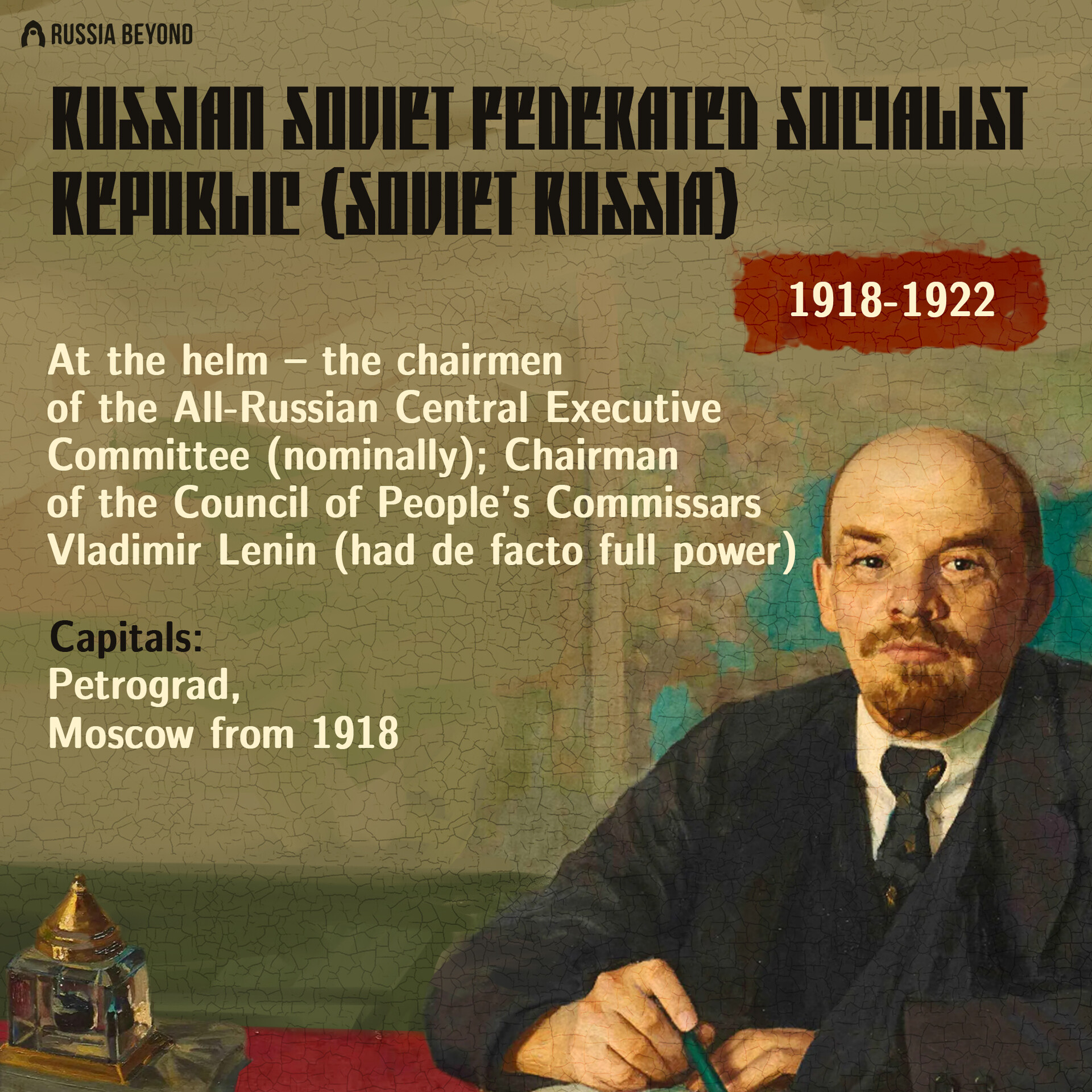
From October 1917 to July 1918, the new state was formalized poorly. The name ‘Russian Soviet Federated Socialist Republic’ was enshrined in the Constitution, accepted in July 1918 in Petrograd.
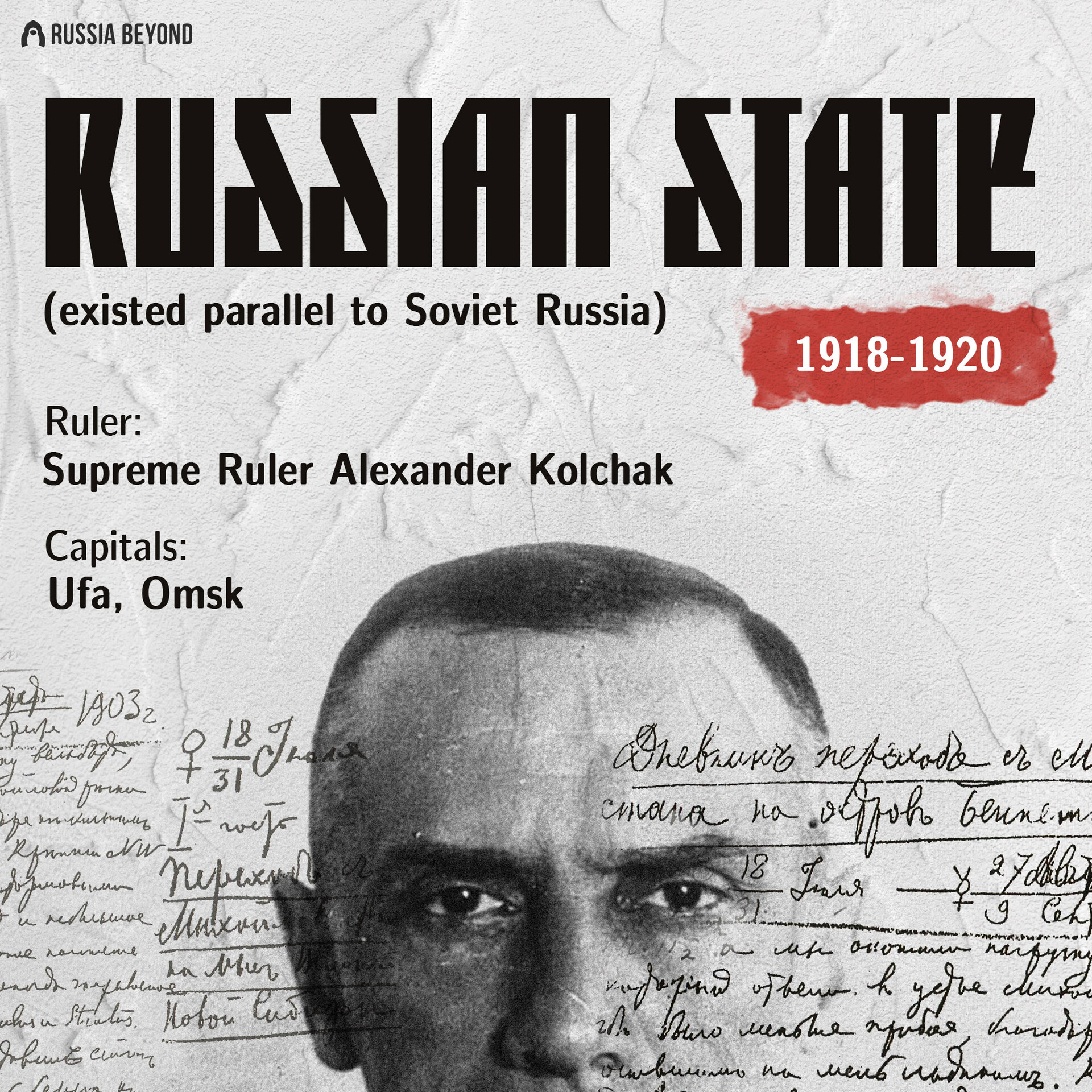
The enemies of the Bolsheviks didn’t recognize Soviet rule in Russia. Alexander Kolchak was elected as the head of the anti-Bolshevik/White movement – the Supreme Ruler of Russia; he headed it until 1920 (until his execution by a firing squad). The White movement was declared defeated in 1922.
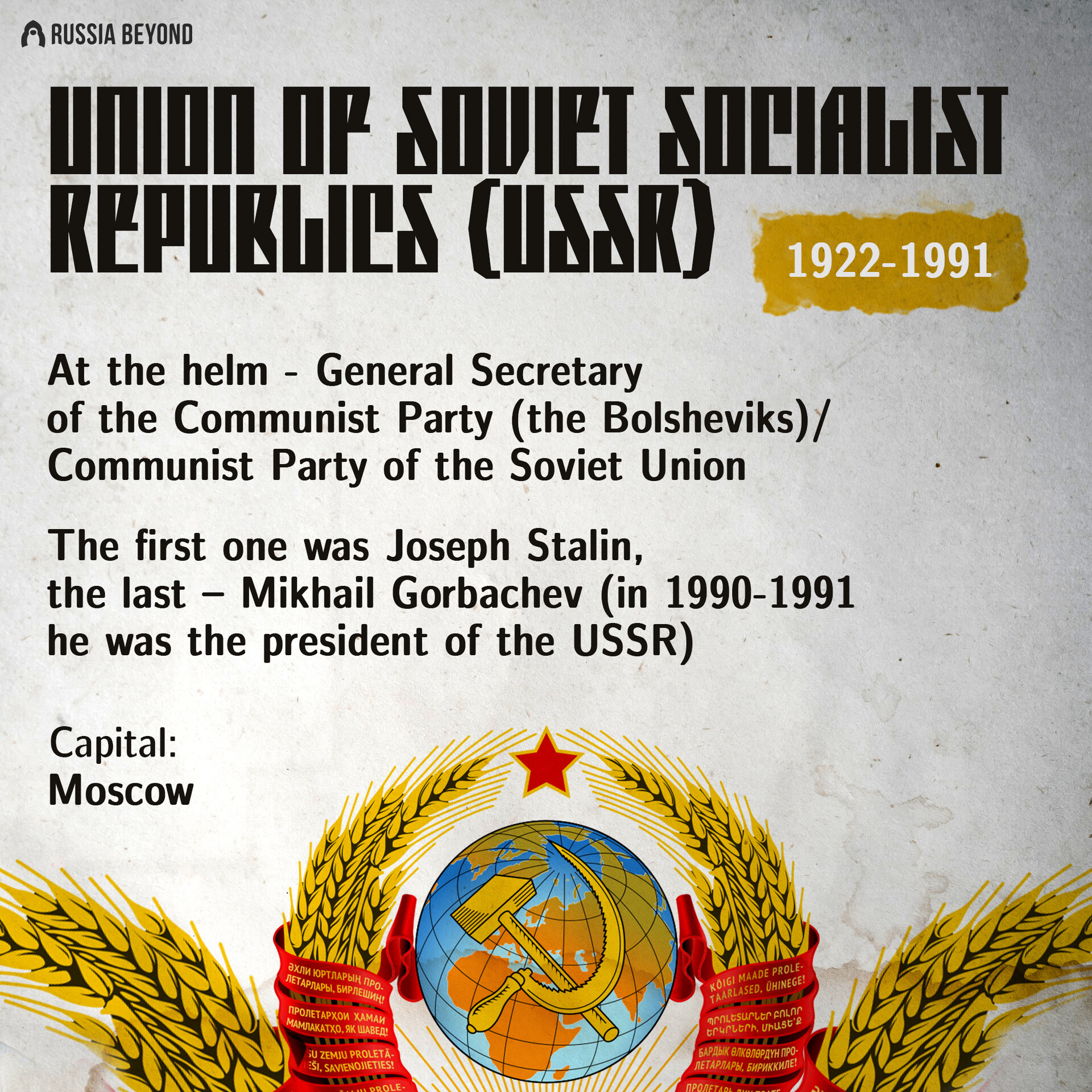
The USSR was formed in 1922 after the full establishment of Soviet rule on the territory of the country. On December 30, 1922, the Russian Soviet Federated Socialist Republic, the Ukrainian SSR, the Byelorussian SSR and the Transcaucasian SFSR united into a single state – the USSR – with unified political authority bodies and its capital in Moscow, with each republic in the Union de jure retaining its right to freely leave the Union. At the moment of its disintegration, the USSR was composed of 15 republics.

On December 25, 1991, the Supreme Soviet of the Russian Soviet Federated Socialist Republic passed a law, which ruled the Russian Soviet Federated Socialist Republic to be renamed the ‘Russian Federation’ (Russia) instead. However, up until 1992, the name ‘Russian Soviet Federated Socialist Republic’ was still allowed to be used in official documents and forms.
Dear readers,
Our website and social media accounts are under threat of being restricted or banned, due to the current circumstances. So, to keep up with our latest content, simply do the following:
If using any of Russia Beyond's content, partly or in full, always provide an active hyperlink to the original material.
Subscribe
to our newsletter!
Get the week's best stories straight to your inbox